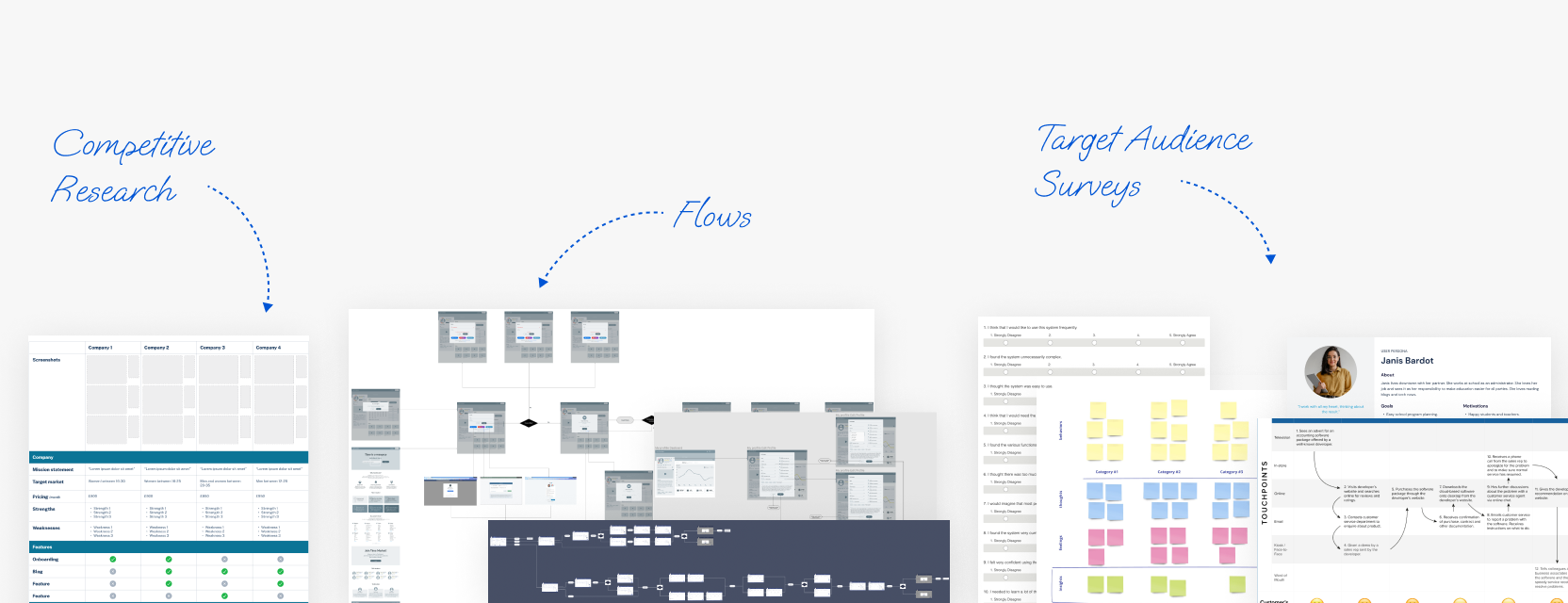Doing your homework before developing a piece of software is the unspoken truth today. It’s been long enough to see the practical benefits of researching everything before starting the development. The preparation saves money, alongside other juicy benefits. But there’s more.
We’ve been in the business since 2007 and have managed to hone our way of doing things. It helps us save the client’s budget, release a well-polished product that is useful for the target audience from the get-go, and the workflow is predictable and streamlined for all stakeholders.
The secret ingredient is software prototyping, or Stage A, as we like to call it.
Why do we always recommend starting with a Software Prototype?
We’ve already done a piece explaining the benefits of software prototyping and the things it can bring to the table. But this time, we’ll get up close and personal.
While prototyping helps us validate the concept and save money in the long run, there’s something else. The research.
We treat each project individually, even if we’ve done something like that before. Breaking everything down to the molecules and slowly digesting it allows building a user experience that will benefit the business as a whole. Because who wouldn’t like a product that is based on user feedback and sells solutions to problems?
Let’s look closer at the research pattern and see how it affects the prototyping process and software development.
Introduction and document analysis
Once we’ve decided to work together, the first step is always to quickly build proficiency and knowledge about the project. This involves interviews and discussions with the client alongside the analysis of existing documentation (if any).
Asking questions is a good way to test the waters and to see what idea lies behind the software. Who’s the target audience? Which problems does this product solve? Do you have any ideas about the sales funnel or user experience concepts? These and many more questions are the backbone of research. It helps us align our efforts to the client’s vision and proceed together.
We’ve had many instances of clients asking us to build something on top of existing product, fix certain parts, improve user experience and sales, and many other things. Documentation analysis helps to get acquainted with the progress up to date.
Documents can be of many forms and sizes. Here are some:
- Tech and functionality specifications
- Mockups
- Lo-fi prototype
- Target audience surveys
And a plethora of other things. Anything that helps us understand the business logic, the tech strengths and weaknesses, etc. Consider it a manual for an unfinished product. A tech person can certainly get all the kinks right, but that takes time. A manual makes it fast and simple.
Exploring business needs and goals
A good piece of software is not enough to make it work as part of a business model. Clean code and cutting-edge technology are always a welcome sight. But what if users don’t get it? What if it doesn’t meet the business goals? You’ll most likely end up with a very good software without anyone using it.
That’s why it matters that we fully realize what is the purpose of the product that we’re about to build. And that often leads to dropping the new tech in favor of something that the users are familiar with. And if your business goal is to launch the product with bare minimum functionality and work your way up from there – there’s no need to tinker for too long.
There can be hundreds of factors that affect production. We here at SEVEN want to keep all of it in mind while designing a software prototype and then building software that will handle the market pressure.

Researching the domain
Different market niches have different rules and target audience. And we love exploring the ins and outs of each one. There’s a certain level of freedom on how to research the domain. Any tiny bit helps. Whether it’s the case studies of our previous projects, some niche-specific knowledge that our clients provide or just diving into search engines looking up for useful insights.
Interviewing potentially interested users is another layer that can offer a lot in terms of knowledge. These people know what they want, have their quality expectations, and have most likely used the services of competitors. And that’s an incredibly valuable source of information. We have a separate article dedicated to gathering user feedback and some best practices. All that we’ll say here is ask the right questions, and you’ll get an upper hand over the competition.
Speaking of which.
Analyzing niche/service competitors
This is one of the greatest sources of information. Someone has already done something similar, and we can learn from their mistakes or strong suits. The clients can even come and say, “I want something like Company X has, but better.” It’s just a rough example but it narrows down our goal margin regardless.
We can analyze the business model, and the way that the product fits into all of it. See if we can potentially improve a certain aspect through superior technology or even an extra round of user interviews. If you’re building something for someone, you should know what that “someone” wants.
Applying everything to a Clickable Software Prototype
All of these steps provide valuable knowledge and understanding of how a product should work. And now we’re off to planning the actual development through prototyping.
Software prototyping is a way to validate critical product decisions (technology, UI, functionality, etc.) without spending too much time or money. Each choice that we make from this point onwards has a piece of research to back it up. Add that to the expertise we’ve amassed so far, and you’ll get a workflow that takes our clients from an idea or a basic product to something that aligns with their business needs and goals.
And it’s the ultimate target of any software development process.